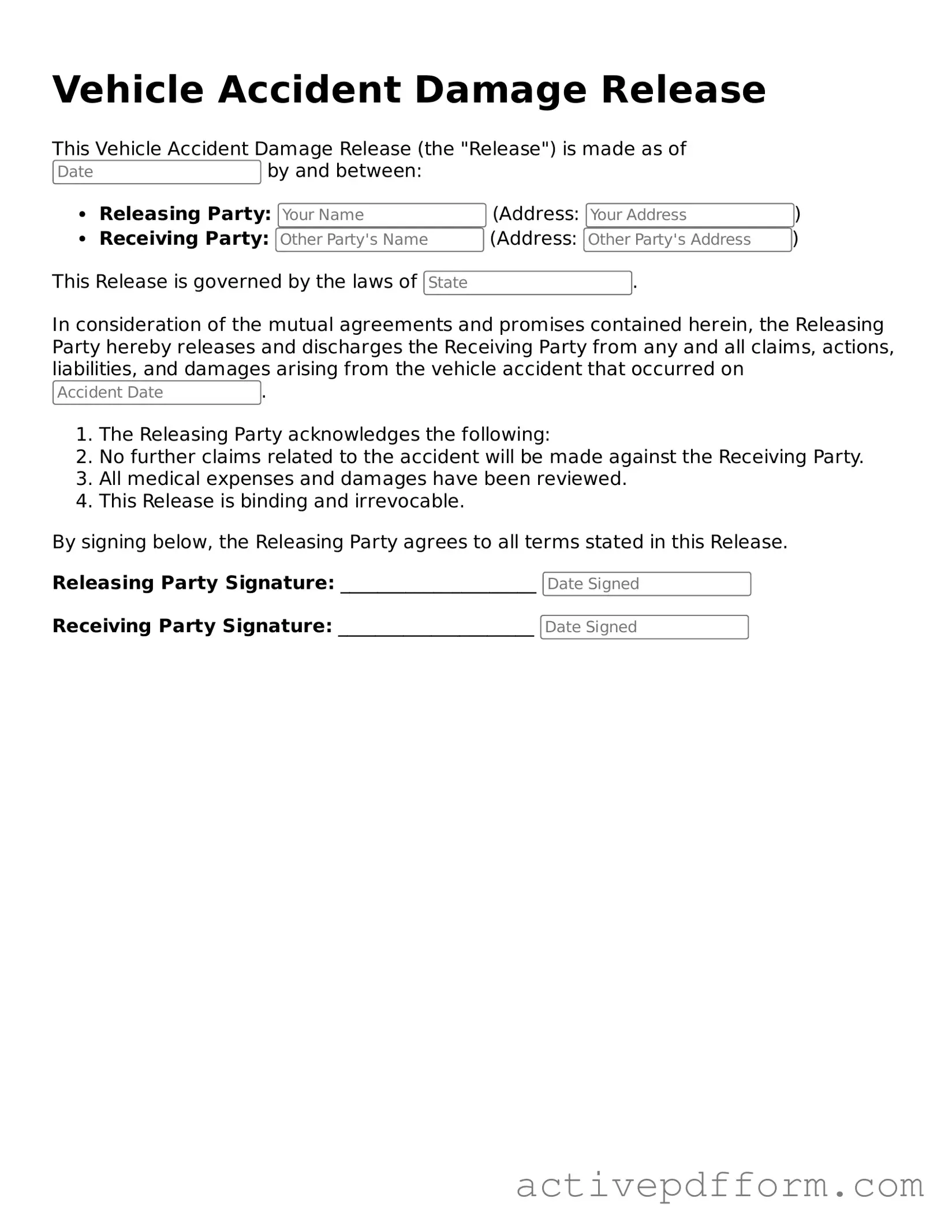What is a Vehicle Accident Damage Release form?
A Vehicle Accident Damage Release form is a legal document that allows an individual to release another party from liability for damages resulting from a vehicle accident. By signing this form, the injured party agrees not to pursue further claims or legal action against the other party for damages related to the accident. It is often used to settle disputes quickly and avoid lengthy litigation.
When should I use a Vehicle Accident Damage Release form?
This form should be used after an accident when both parties have agreed on the extent of the damages and have reached a settlement. It is particularly useful in situations where minor damages have occurred, and both parties wish to avoid involving insurance companies or legal proceedings. Ensure that all parties involved are in agreement about the terms before signing.
What information is typically included in the form?
The Vehicle Accident Damage Release form generally includes the names and contact information of the parties involved, details about the accident (such as date, time, and location), a description of the damages, and the agreed-upon compensation. It may also include a statement releasing the other party from further claims and a signature line for both parties to sign and date the document.
Is the Vehicle Accident Damage Release form legally binding?
Yes, once both parties have signed the form, it becomes a legally binding contract. This means that the injured party cannot later claim additional damages or pursue legal action related to the accident, provided that the release was made voluntarily and without coercion. It is advisable to consult with a legal professional to ensure that the form meets all legal requirements.
Can I change my mind after signing the form?
Generally, once the Vehicle Accident Damage Release form is signed, it cannot be revoked. The purpose of the form is to finalize the agreement and prevent further claims. However, if there was fraud, misrepresentation, or duress involved in obtaining the signature, it may be possible to challenge the validity of the release. Legal advice may be necessary in such cases.
Where can I obtain a Vehicle Accident Damage Release form?
Vehicle Accident Damage Release forms can often be found online through legal document services, at local courthouses, or through insurance companies. It is important to ensure that the form you use is appropriate for your state and situation. Templates should be reviewed carefully to ensure they meet all necessary legal standards.
